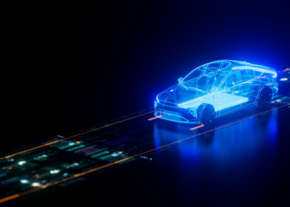
CES 2020 in Las Vegas, where innovation rhymes with transformation
Francesca Del Bello
The growing presence of the automotive industry at the Las Vegas Electronics show calls for an in-depth analysis on the future of the industry
Since 1967, CES (acronym for Consumer Electronics Show) has been bringing together most of the world’s top electronics and consumer technology companies. To understand the scope of the event, just take a look at the figures of the 2020 edition (held in Las Vegas from January 7 to 10): the exhibiting companies were more than 4,400, for a total of about 270,000 square metres of exhibition space, while visitors numbered around 170,000. Since the first edition, more than 50 years ago, innovations that have changed (or at least significantly marked) the life of most consumers have been first unveiled here: from a common video recorder, DVDs and, later, Blu-Rays, as well as the most modern technologies for home entertainment (smart and connected TV, screens with OLED systems and so on), just to mention a few examples.
Not (only) an event where futuristic prototypes are exhibited for the first time, but a real stage on which technologies that, sooner or later, will affect our industry are displayed to the public: consumer electronics is characterized by an across-the-board approach, and must be adapted to different sectors, including the automotive sector. One cannot help but notice how the space reserved for technologies designed for this sector is expanding considerably: starting in 2013, when the Las Vegas show turned, for the first time, the spotlight on autonomous driving. Once again the automotive sector was well represented, and not only as a topic of discussion in meetings and conferences. Car manufacturers brought their most futuristic models, increasingly connected, able not only to guarantee the safety of both drivers and passengers, but also to provide a real all-round on board experience. During the event, systems designed to make the most of artificial intelligence on board received the green light, alongside infotainment devices and increasingly sophisticated sensors that are gradually approaching level 5 of autonomous driving, which is tantamount to eliminating human control at the wheel.
And yet, someone thought of raising the bar even higher: a company traditionally linked to the electronics sector presented a concept car, revealing to the world a prototype of an electric vehicle equipped with a vast array of sensors that represents the highest expression of the technological research carried out by the company in recent years. A provocation? Maybe. However, this confirmed once again – if ever there was a need - how much passenger vehicles are becoming increasingly complex from a technological point of view: ground-breaking structures in which mechanical systems communicate with increasingly sophisticated digital components. Future mobility scenarios include vehicles capable of communicating efficiently with their surroundings, allowing drivers and passengers to enjoy a true "user experience". It should come as no surprise, therefore, that within a trade show traditionally dedicated to communication and entertainment devices, the automotive sector finds so much space - and probably more in the future -. Evolution and progress go hand in hand with new unexpected scenarios.
Not (only) an event where futuristic prototypes are exhibited for the first time, but a real stage on which technologies that, sooner or later, will affect our industry are displayed to the public: consumer electronics is characterized by an across-the-board approach, and must be adapted to different sectors, including the automotive sector. One cannot help but notice how the space reserved for technologies designed for this sector is expanding considerably: starting in 2013, when the Las Vegas show turned, for the first time, the spotlight on autonomous driving. Once again the automotive sector was well represented, and not only as a topic of discussion in meetings and conferences. Car manufacturers brought their most futuristic models, increasingly connected, able not only to guarantee the safety of both drivers and passengers, but also to provide a real all-round on board experience. During the event, systems designed to make the most of artificial intelligence on board received the green light, alongside infotainment devices and increasingly sophisticated sensors that are gradually approaching level 5 of autonomous driving, which is tantamount to eliminating human control at the wheel.
And yet, someone thought of raising the bar even higher: a company traditionally linked to the electronics sector presented a concept car, revealing to the world a prototype of an electric vehicle equipped with a vast array of sensors that represents the highest expression of the technological research carried out by the company in recent years. A provocation? Maybe. However, this confirmed once again – if ever there was a need - how much passenger vehicles are becoming increasingly complex from a technological point of view: ground-breaking structures in which mechanical systems communicate with increasingly sophisticated digital components. Future mobility scenarios include vehicles capable of communicating efficiently with their surroundings, allowing drivers and passengers to enjoy a true "user experience". It should come as no surprise, therefore, that within a trade show traditionally dedicated to communication and entertainment devices, the automotive sector finds so much space - and probably more in the future -. Evolution and progress go hand in hand with new unexpected scenarios.
























